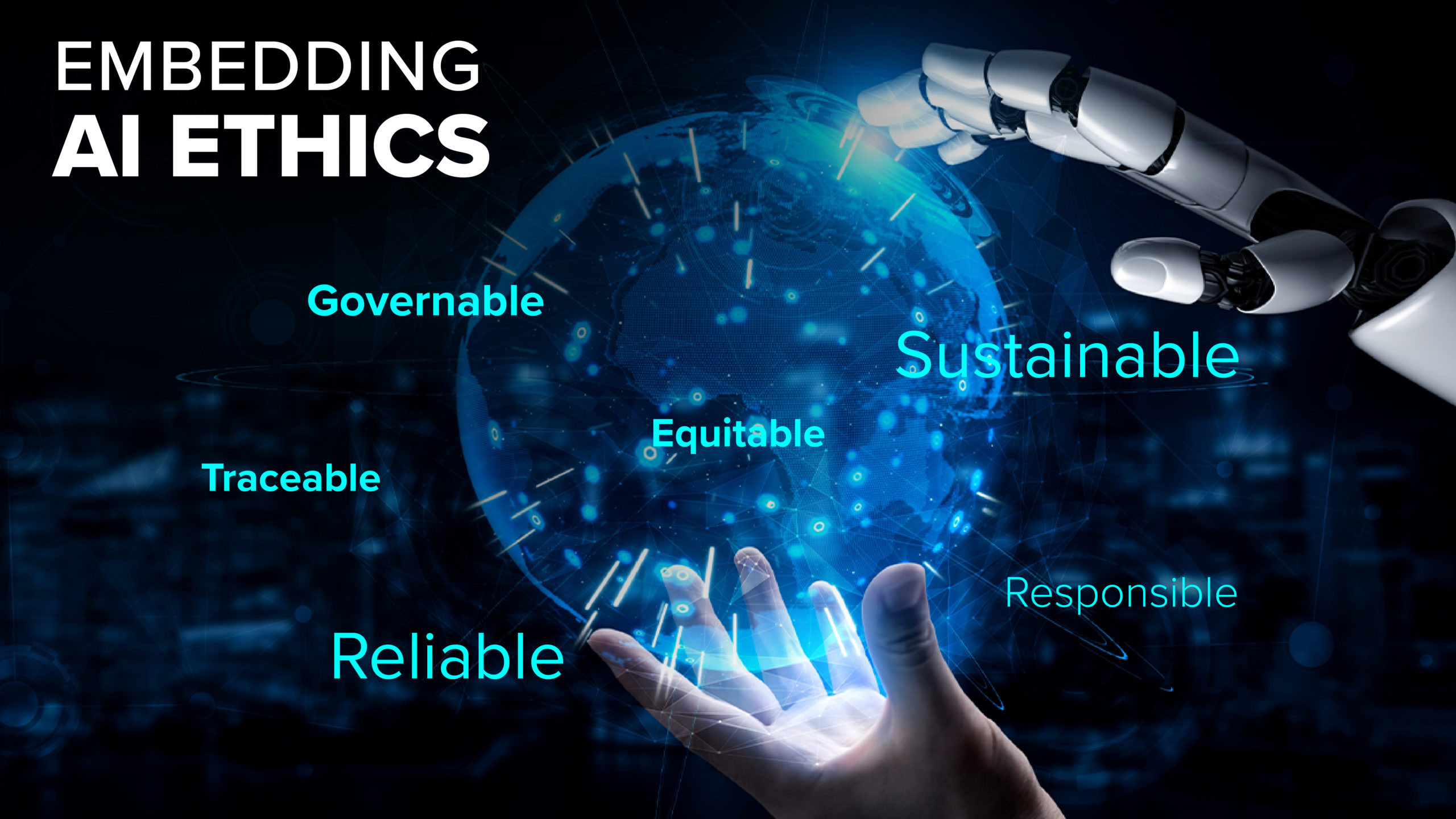The Truth About AI Learning: Implications For Safe And Ethical Application

Table of Contents
Understanding the Biases Embedded in AI Learning
AI systems, powerful as they are, are not immune to the biases present in the data they are trained on. This can lead to unfair or discriminatory outcomes, undermining the very principles of fairness and equality that we strive for in society. Understanding these biases is the first step towards mitigating their impact.
Data Bias and its Propagation
AI models learn from data, and if that data reflects existing societal biases (gender, racial, socioeconomic), the AI system will perpetuate and even amplify those biases. This is a critical issue because biased AI systems can lead to real-world harm.
- Example: A facial recognition system trained primarily on images of white faces may perform poorly on identifying individuals with darker skin tones, leading to misidentification and potential wrongful accusations. This highlights the crucial need for diverse and representative datasets in AI training.
- Example: A recruitment AI trained on historical hiring data might inadvertently discriminate against women or minorities if past hiring practices were biased. This underscores the importance of auditing training data for potential biases.
- Solution: Employ diverse and representative datasets, actively monitor for bias during development using bias detection tools, and implement bias mitigation techniques like re-weighting data or adversarial training. This requires a concerted effort from data scientists and ethicists.
Algorithmic Bias
Even with unbiased data, the algorithms themselves can introduce biases due to design choices or limitations. The way an algorithm is structured can inadvertently lead to discriminatory outcomes.
- Example: A loan application algorithm might inadvertently discriminate against certain demographic groups based on seemingly neutral factors like zip code or credit history, even if the data itself isn't explicitly biased. This shows the importance of carefully examining the design choices in AI algorithms.
- Example: An AI system designed to predict recidivism might disproportionately target certain racial groups if the algorithm overweights certain factors correlated with race but not directly predictive of future crime.
- Solution: Rigorous testing and auditing of algorithms, employing explainable AI (XAI) techniques to understand decision-making processes, and incorporating fairness constraints into algorithm design are critical steps. This ensures accountability and helps identify hidden biases.
Ensuring Transparency and Accountability in AI Learning Systems
The lack of transparency in many AI systems, particularly deep learning models, is a significant concern. This “black box” problem makes it difficult to understand how these systems arrive at their decisions, hindering accountability.
The Black Box Problem
Many AI systems, especially deep learning models, function as "black boxes," making it difficult to understand how they arrive at their conclusions. This lack of transparency hinders accountability and trust.
- Solution: Promote the development and use of explainable AI (XAI) techniques to make the decision-making processes more transparent. This allows us to understand the reasoning behind AI decisions and identify potential biases.
- Solution: Employ techniques like LIME (Local Interpretable Model-agnostic Explanations) and SHAP (SHapley Additive exPlanations) to provide insights into the model's predictions. This increases trust and facilitates debugging.
Establishing Responsibility for AI Actions
Determining liability when an AI system makes a mistake or causes harm is a significant legal and ethical challenge. Who is responsible when an autonomous vehicle causes an accident, for example?
- Solution: Develop clear legal frameworks and guidelines that establish accountability for the actions of AI systems, considering the roles of developers, deployers, and users. This requires a collaborative effort between legal experts, AI developers, and policymakers.
- Solution: Implementing robust testing and validation procedures before deploying AI systems in high-stakes environments is critical. This helps minimize the risk of errors and ensures safety.
Developing Ethical Guidelines for AI Learning
Developing ethical guidelines for AI learning is not just about technical solutions; it requires a holistic approach encompassing social, economic, and legal considerations.
Privacy Concerns
AI learning often involves collecting and analyzing vast amounts of personal data, raising significant privacy concerns.
- Solution: Implement robust data protection measures, obtain informed consent, and adhere to relevant data privacy regulations (e.g., GDPR, CCPA). This ensures responsible data handling and protects individual privacy.
- Solution: Employ differential privacy and federated learning techniques to minimize the risk of data breaches and protect sensitive information.
Job Displacement and Economic Impact
The automation potential of AI raises concerns about job displacement and the need for workforce retraining and adaptation.
- Solution: Proactive measures to support workforce transitions, investing in education and training programs for new skills relevant in an AI-driven economy. This helps individuals adapt to the changing job market.
- Solution: Exploring alternative economic models and policies that can mitigate the negative impacts of automation on employment.
The Responsible Use of AI
Ethical considerations extend beyond individual applications to encompass broader societal impacts.
- Solution: Promote multi-stakeholder dialogues involving researchers, policymakers, industry leaders, and the public to establish shared ethical principles for AI development and use. This fosters collaboration and ensures that AI benefits everyone.
- Solution: Establishing independent oversight bodies to monitor the development and deployment of AI systems and ensure adherence to ethical guidelines.
Conclusion
The responsible development and application of AI learning requires a multifaceted approach. Addressing the biases embedded in data and algorithms, ensuring transparency and accountability, and establishing robust ethical guidelines are crucial steps toward harnessing the potential of AI while mitigating its risks. By proactively tackling these challenges, we can foster a future where AI learning contributes to a safer, more equitable, and more prosperous world. Let's continue the conversation on AI learning and work collaboratively to ensure its safe and ethical application for the benefit of all. The future of responsible artificial intelligence learning depends on our collective commitment to ethical development and deployment.

Featured Posts
-
 Part Time Position For Former Fox19 Meteorologist In Cleveland
May 31, 2025
Part Time Position For Former Fox19 Meteorologist In Cleveland
May 31, 2025 -
 New Covid 19 Variant Fueling Case Increase In Specific Regions
May 31, 2025
New Covid 19 Variant Fueling Case Increase In Specific Regions
May 31, 2025 -
 La Mejor Receta De Lasana De Calabacin Facil Estilo Pablo Ojeda Mas Vale Tarde
May 31, 2025
La Mejor Receta De Lasana De Calabacin Facil Estilo Pablo Ojeda Mas Vale Tarde
May 31, 2025 -
 Understanding The Posthaste Impact Canadas Response To The Global Tariff Ruling
May 31, 2025
Understanding The Posthaste Impact Canadas Response To The Global Tariff Ruling
May 31, 2025 -
 Thursday Night Baseball District Championships Playoff Berths And College Tennis Action
May 31, 2025
Thursday Night Baseball District Championships Playoff Berths And College Tennis Action
May 31, 2025
